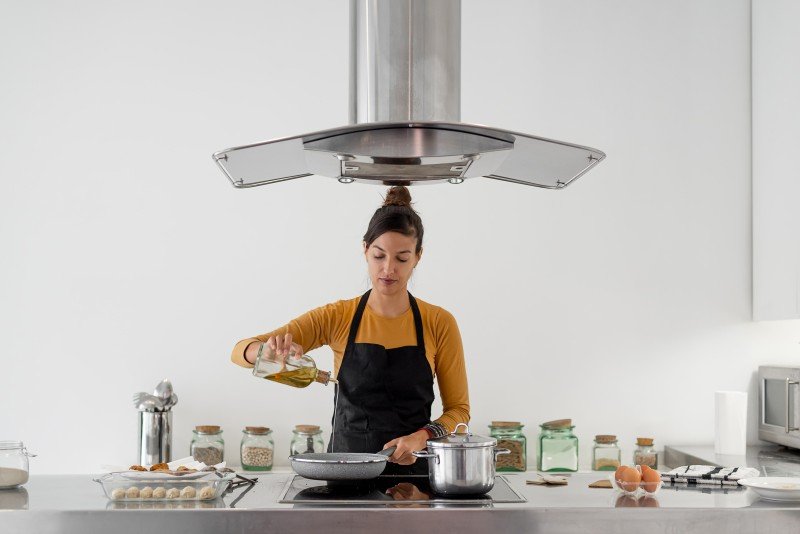The Essential Guide to Oven Hobs: Selecting the Right One for Your Kitchen
When it concerns home cooking, couple of home appliances are as essential as the oven hob. This versatile piece of equipment is important for a range of cooking methods-- boiling, frying, simmering, and sautéing. Provided the myriad of choices available on the market, picking the ideal oven hob for one's kitchen can be daunting. This post aims to provide an extensive take a look at oven hobs, discussing their types, performances, benefits, disadvantages, and essential factors to consider when purchasing one.
Understanding Oven Hobs
Oven hobs, commonly called cooktops, are flat cooking platforms that feature burners or heating elements. They can be integrated with an oven or stand-alone. The option of an oven hob can considerably impact cooking efficiency and benefit.
Kinds Of Oven Hobs
Oven hobs can be found in various types, each with distinct features. Below are the most typical types offered:
| Type | Description | Advantages | Downsides |
|---|---|---|---|
| Gas Hobs | Uses gas or lp | Immediate heat and exact temperature control; works well with all cookware | Requires a gas connection; less energy-efficient than electric |
| Electric Hobs | Use electric coils or radiant heat | Easy to clean; constant heat distribution | Slower to warm up; can be less responsive than gas |
| Induction Hobs | Uses magnetic fields to heat cookware directly | Quick cooking; energy-efficient; simple to clean | Requires compatible pots and pans; normally more pricey |
| Ceramic Hobs | Flat glass-ceramic surface with convected heat | Aesthetically pleasing; simple to clean | Can be susceptible to scratching; slower to heat than induction |
Secret Features of Oven Hobs
When choosing an oven hob, a number of features ought to be taken into consideration:
- Size & & Configuration: Available in different sizes, oven hobs can accommodate several pots and pans. Ovens And Hobs are normally 30, 36, or 48 inches broad.
- Power Output: Look for hobs with varying power levels for various cooking processes. High-powered burners are outstanding for boiling, while lower-power ones can be used for simmering.
- Control Types: Choose between knob controls and touch controls. Knobs provide tactile feedback, while touch controls provide streamlined styles and additional functionalities.
- Safety Features: Options like automatic shut-off, child locks, and flame failure gadgets are vital for preventing accidents.
- Reduce of Cleaning: Choose models with smooth surfaces or removable parts for simple maintenance.
Benefits and Disadvantages
Comprehending the advantages and disadvantages of different oven hobs can help in making an informed decision.
Benefits
- Versatility: Suitable for various cooking techniques, from boiling to frying.
- Speed: Many hobs heat rapidly, especially induction designs.
- Energy Efficiency: Some alternatives, like induction hobs, can decrease energy usage compared to conventional approaches.
Disadvantages
- Expense: High-end models, particularly induction hobs, can be pricey.
- Setup: Gas hobs require professional setup and a gas supply, which might sustain extra costs.
- Compatibility: Not all pots and pans works on induction hobs, demanding additional purchases.
Buying Considerations
When picking an oven hob, think about the following elements:
- Cooking Style: Assess how frequently and what kind of cooking you do to figure out the best hob type.
- Kitchen Layout: Measure your kitchen area to guarantee the hob fits and matches other home appliances.
- Budget: Determine just how much you want to invest. Factor in installation and the expense of any needed pots and pans.
- Energy Source: Evaluate the accessibility of natural gas or the electrical capacity of your kitchen to decide in between gas and electric options.
Frequently Asked Questions About Oven Hobs
Q1: What is the distinction between a cooktop and an oven hob?A cooktop and an oven hob normally describe the same home appliance. Nevertheless,"cooktop "is a broader term that includes both standalone hobs and integrated units with ovens. Q2: Can I use any pots and pans on an induction
hob?No, induction hobs need ferrous( magnetic)pots and pans
to work. Cookware made from material like stainless-steel or cast iron appropriates, while aluminum and copper without magnetic properties are not. Q3: How do I clean my oven hob properly?Cleaning methods depend on the kind of hob.
Typically, a wet cloth and mild detergent work for glass-ceramic surfaces, while a particular hob cleaner is ideal for induction. Gas hobs need disassembling burners for extensive cleaning. Q4: Are induction hobs safe for cooking?Yes, induction hobs are typically more secure than gas hobs as they do not produce an open flame,and the surface cools off quickly. A lot of designs likewise feature kid safety locks. Q5: How typically ought to I replace my oven hob?The lifespan of an oven hob differs based upon the type and use. Usually, they last around 10 to 15 years.
Routine maintenance can assist extend this period. Selecting the best oven hob for your home can significantly enhance your cooking experience. With a thorough understanding of the types, functions, advantages, and considerations, anybody can make an informed choice. From the high heat of gas to the effectiveness of induction, there is a hob matched to every cooking need. Eventually, the right oven hob can change cooking from a mundane task into an art kind, allowing culinary enthusiasts to create delicious meals with ease.

